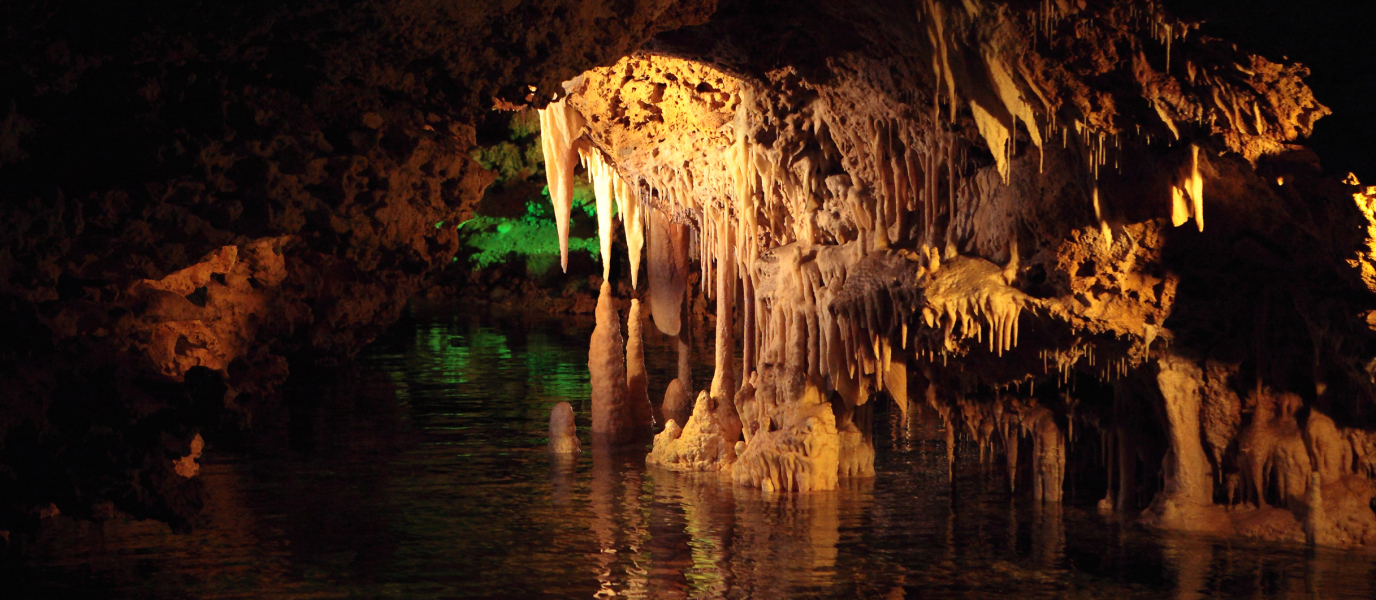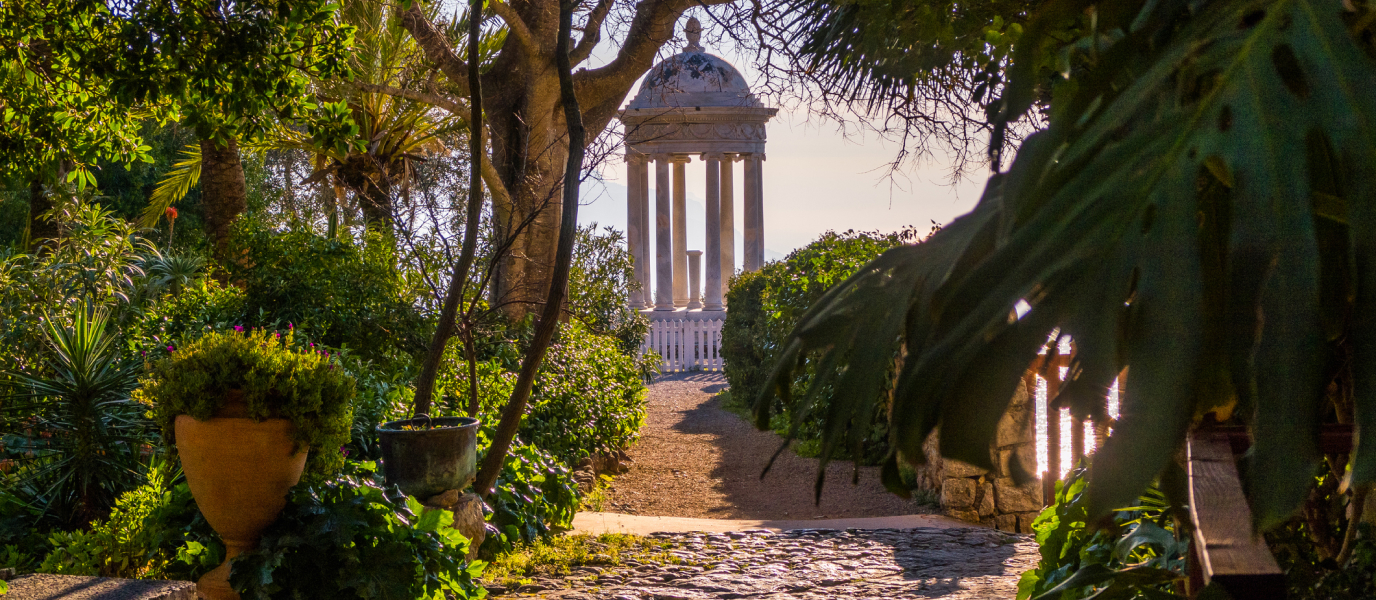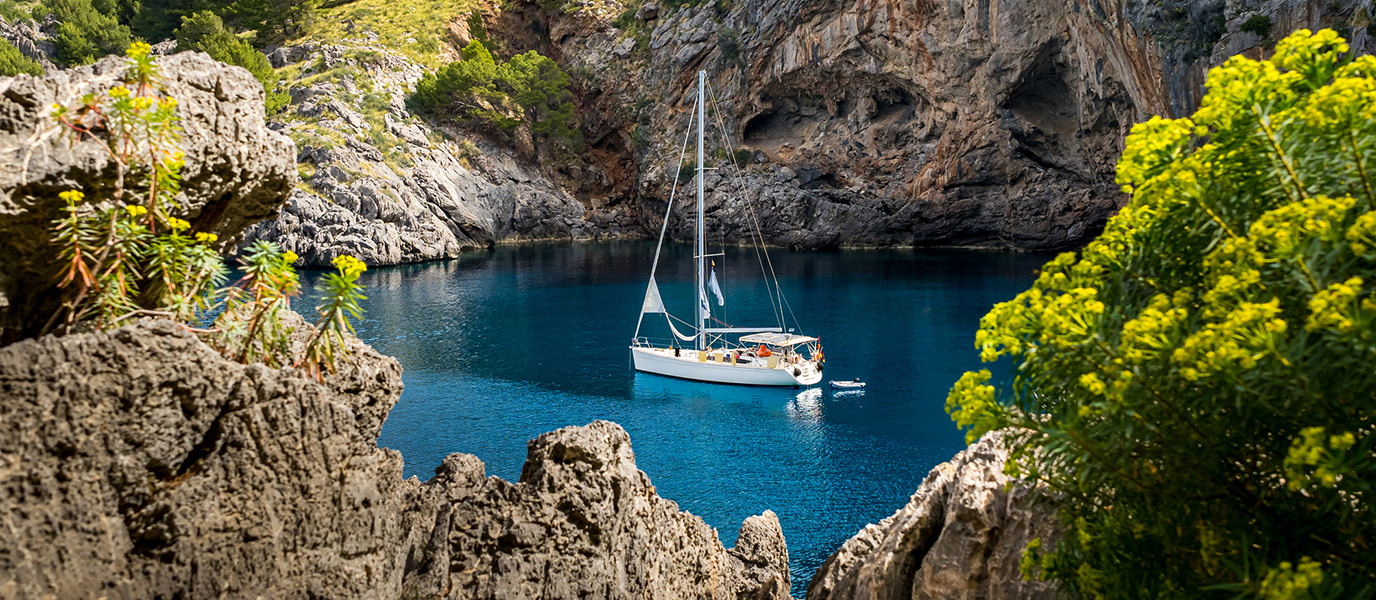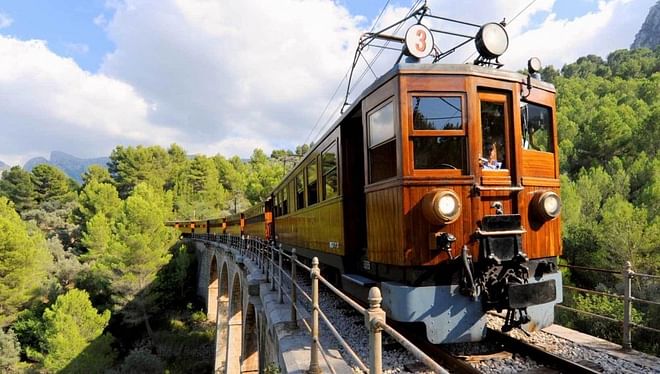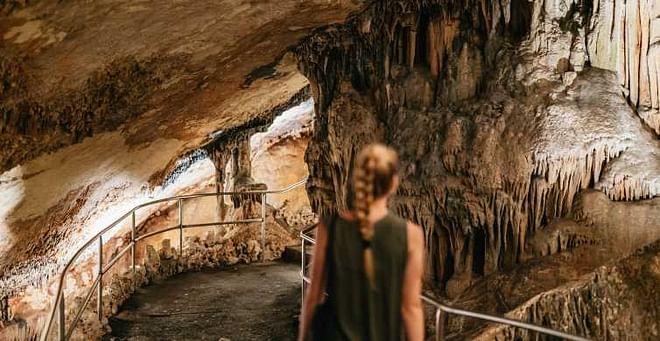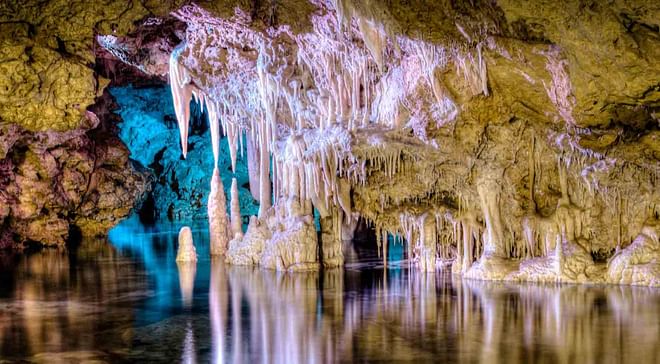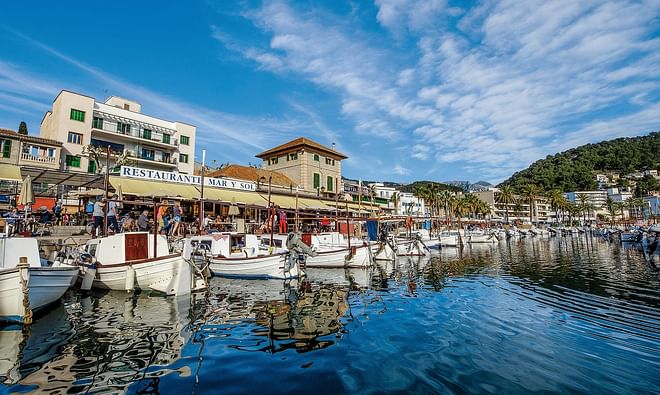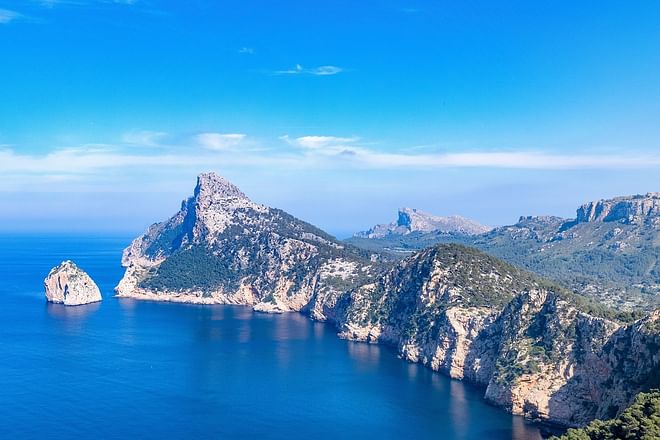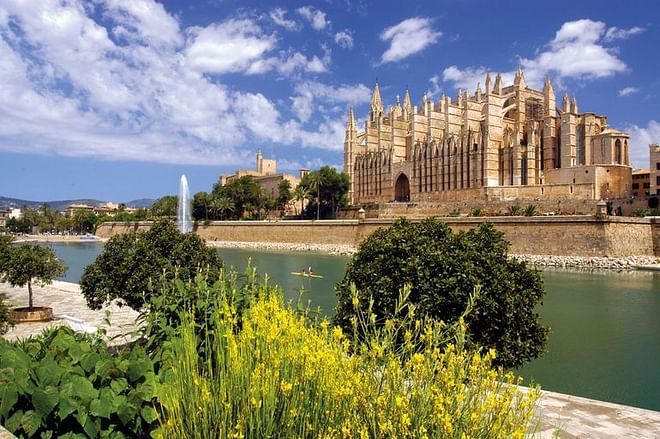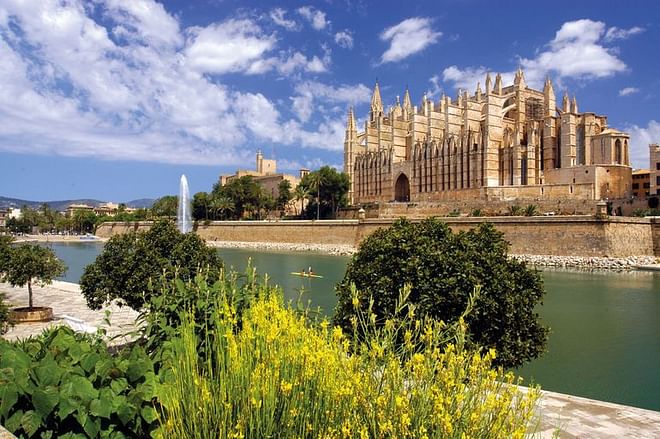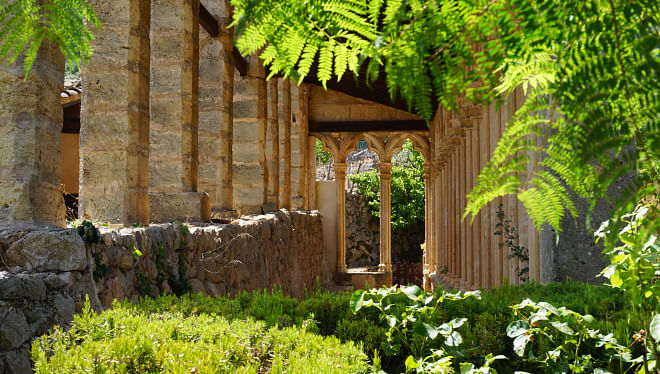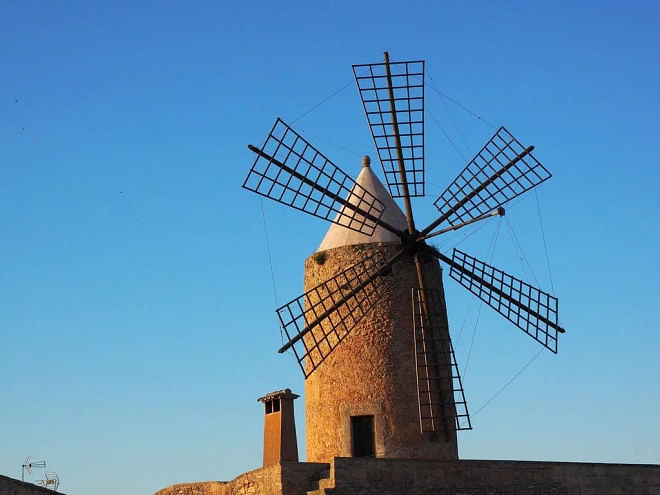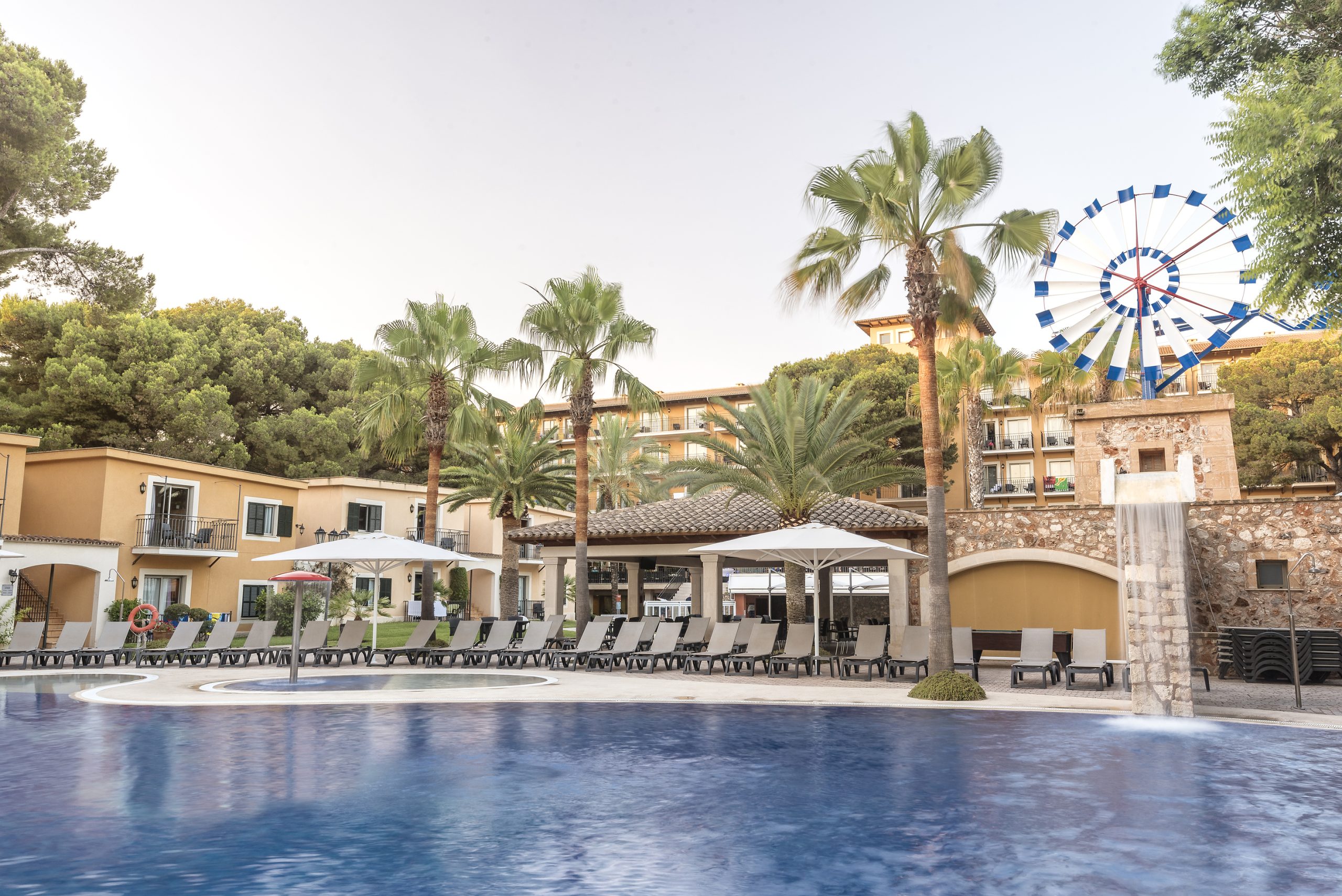The Hams Caves (‘hams’ means ‘fish hook’) are part of a group of caves that have proliferated for millions of years in the eastern part of Majorca. This group also includes the Drach Caves and the Artà Caves.
The Hams Caves are known for their extensive rock formations that resemble hooks hanging from the ceiling. Furthermore, its interior lake (the Sea of Venice) is home to a small crustacean species that is unique to the area, which coexists with a musical show that is offered to visitors.
The caves extend over 850 metres and includes 15 distinct galleries that may be visited, all of which are filled with stalactites, stalagmites, columns and eccentric shapes in a striking backdrop.
The History of the Hams Caves
The ancient Hams Caves were not discovered until 1905. And, as is almost always the case, this discovery was accidental. Speleologist Pedro Caldentey Santandreu was actually digging for onyx (a semi-precious stone) in the area, but upon carrying out an exploratory excavation, he came across this incredible natural sight.
In 1910 the caves were opened to the public, the first in Spain to offer organised, regular visits. They were also the first to include an electronic lighting system, thanks to the installation of an ingenious system that relied on nearby water energy. In this way, the caves could be illuminated for up to 16 hours daily.
In 2015, a new space was opened up to the public, the Blue Cave, offering a more didactic aspect to the cave visit. In the documentary ‘Discovering the past’, which is projected here, the Hams Caves are described with regards to the history of the island of Majorca.
The projection of ‘Genesis, the history of life’ has a similar objective. This frenzied time-lapse film goes from the Big Bang, the supposed creation of the universe, to the present day. The documentary is projected onto the cave’s very rock face inside the Pit of Hell.
The Round Cave
This space provides access to the Hams Caves. The Round Cave is a vast, open-air area containing many plant species that form a spectacular botanical garden. It is also home to numerous species of free-flying birds that are native to the island.
But the most unique aspect of the Round Cave is not biological, but rather, geological. Because, originally, this area was located underground. In fact, millions of years ago, it had a dome covering which sunk, exposing what was once an interior space to the outdoors.
Generally speaking, the temperature in this space is a few degrees lower than outdoors, favouring the development of the numerous plant and animal species that live here. For this reason, it is also a great place to get acclimated to the interior cave temperature (approximately 18-20 degrees Celsius).
The Blue Cave
This is the first space that you will encounter of the so-called interior cave. As we mentioned earlier, when visiting this space, you can view the projection of the documentary ‘Discovering the past’ and later, you can admire the rest of the area’s attractions:
- The new LED lighting. Provides this space with an undeniably artistic atmosphere, combining creative shapes with changing colours.
- Samson’s Pillars. Two large parallel formations with soft lighting that contrasts with the intense blue background.
- The Plains of Fra Mauro.
- The Pit of Hell. The documentary ‘Genesis, the history of life’ is projected in the natural auditorium found in this space.
The Classic Cave
Until a few years ago, the visit to the Hams Caves was limited to these 12 galleries that make up the so-called Classic Cave. The galleries are quite similar to those of other similar caves in Majorca, filled with stalactites, stalagmites and columns.
The creativity of nature is impressive, depositing the mineral remains that are dissolved in the drops of water that filter from the surface. This creates shapes that inspire the imagination. For example, those of the so-called Lost Paradise gallery. Or the 2nd of March gallery, named after the date of the cave’s discovery by Pedro Caldentey.
Special mention should be made of the Sea of Venice. This lake is formed from accumulated underground water. Here, visitors may enjoy a classical music production, along with projections of evocative images on the cave walls, and even the appearance of a boat guided by a boatman.
And afterwards, Porto Cristo
After visiting the Hams Caves, you cannot miss out on a stroll through Porto Cristo, one of the loveliest towns of Majorca.
In ancient times, this port supplied the nearby town of Manacor. So, it is also known as the Port of Manacor.
No longer the bustling port of the past, today it is a lovely coastal town filled with low rise houses, ideal for family vacations. Because even though the tourism boom of the late 20th century also reached this town, it did so in a more sustainable manner.
Apart from the caves (the Drach Caves are also located here), you should be sure to visit the Falcons Tower, a coastal surveillance point constructed in the 16th century. And, the Cala Petita, a lovely virgin sandy beach that is situated just a kilometre and a half away from the town’s historic centre.




































































